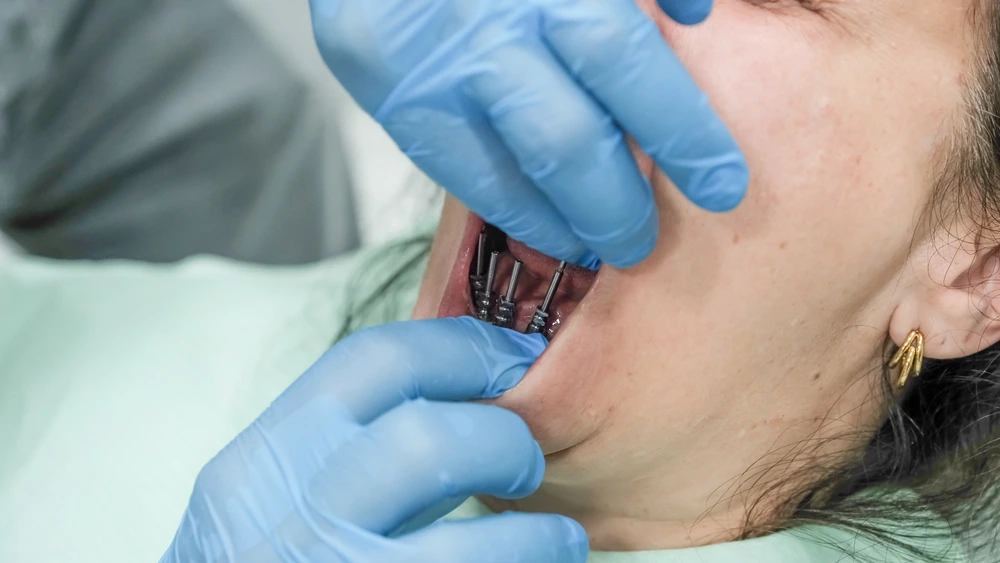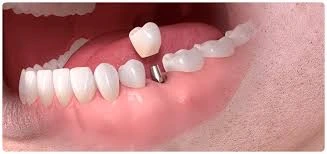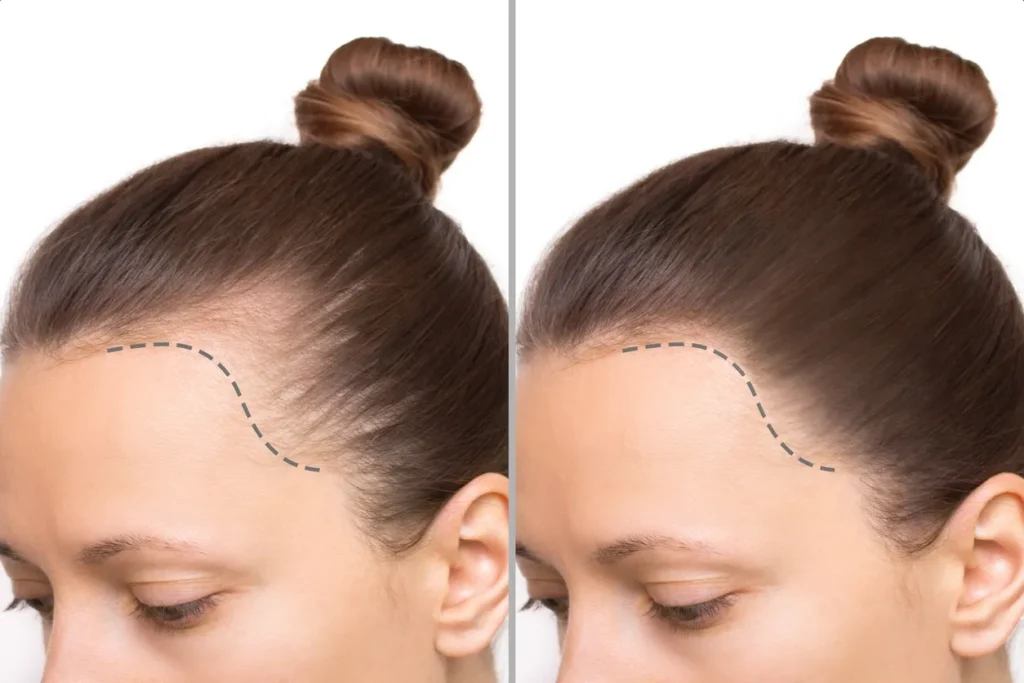It might sound too good to be true, but advances in modern dentistry are making it a reality. Thanks to minimally invasive techniques and state-of-the-art technology, replacing missing teeth with little to no surgical intervention is now possible.
In this article, we’ll dive into how Dental Implants Without Surgery work, who they’re best suited for, and whether they live up to their promise of comfort and convenience—backed by expert insights from the specialists at Prof Clinic.
Can You Get Dental Implants Without Surgery?
Non-surgical dental implants typically refer to techniques that minimize or eliminate incisions and stitches, though they still involve minor surgical elements. The term commonly describes flapless implant placement, a modern method guided by advanced 3D imaging and computer-assisted technology. This approach allows implants to be inserted directly through the gum without cutting, offering:
- Faster recovery time
- No need for sutures
- Lower risk of infection
- Minimal bleeding and swelling
However, it’s important to note that even flapless techniques require drilling into the bone, making them a form of minor surgery. Not all patients are suitable candidates, and precise planning by an experienced dentist is critical for success.
At Prof Clinic, we specialize in state-of-the-art, minimally invasive implant solutions designed for your comfort and oral health. Schedule a consultation today to explore your options with our expert team.
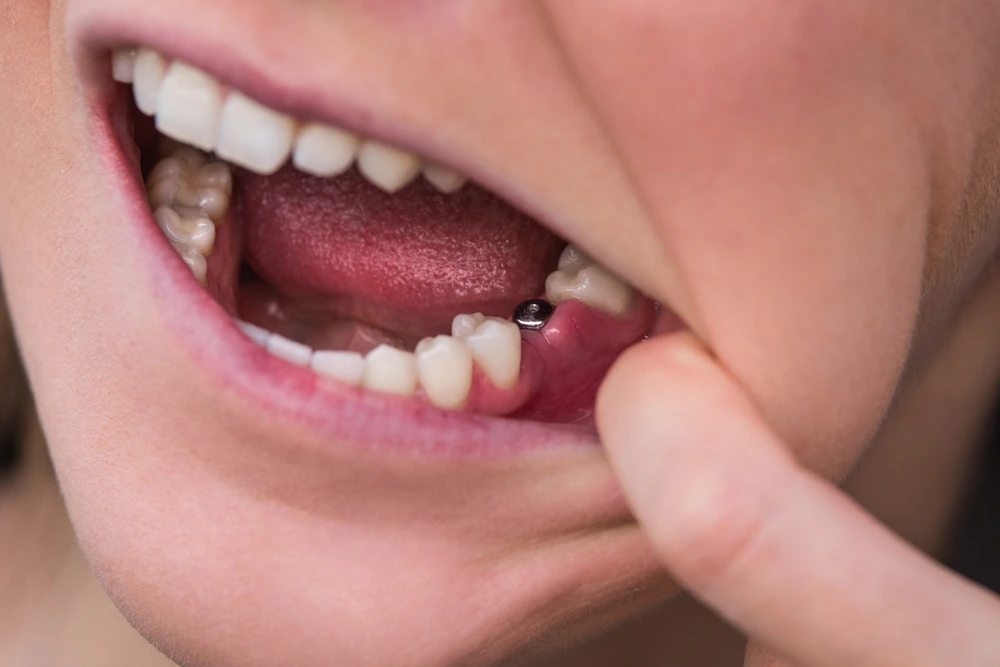
Types of Dental Implants Without Surgery
Choosing the right dental implant solution starts with understanding the minimally invasive options available—especially if you’re seeking alternatives to traditional, more invasive procedures.
Non-surgical dental implants refer to techniques that minimize incisions, sutures, and extensive bone manipulation. While no implant is entirely “non-surgical” (as they require insertion into the bone), modern methods feel far less invasive. Below are the primary types:
- Flapless Dental Implants: Inserted directly through the gum using a punch technique, this method relies on advanced 3D digital planning for precise placement without cutting or stitching.
- Mini Dental Implants (MDIs): Smaller in diameter than traditional implants, MDIs cause minimal tissue trauma and are ideal for stabilizing dentures, particularly in patients with limited bone volume.
- Guided Implant Surgery: Using computer-aided technology to map the jaw, this approach places implants through small, precise entry points, resulting in a faster, less painful procedure.
- Immediate Load Implants (Teeth-in-a-Day): These allow a temporary crown to be placed right after implant insertion, reducing surgical visits and shortening the treatment timeline.
The best option depends on your bone quality, gum health, and overall oral condition. A comprehensive 3D assessment by a dental specialist is essential to determine your eligibility.
At Prof Clinic, we excel in delivering personalized, minimally invasive implant solutions crafted for your comfort and confidence. Schedule a consultation today to rediscover your smile with precision, safety, and care.
Read also: Define Dental Implant: Comprehensive Guide
Who Is a Candidate for Non Surgical Dental Implants?
Determining if non-surgical dental implants are right for you starts with understanding the key factors that influence eligibility for these minimally invasive treatments.
While less invasive than traditional methods, non-surgical implants still require precise conditions for long-term success. Ideal candidates typically include:
- Patients with adequate bone volume: Flapless and mini dental implants (MDIs) rely on sufficient healthy bone to ensure stability without the need for grafts.
- Individuals in good overall health: Those without uncontrolled conditions, such as diabetes or autoimmune diseases, typically heal better and respond well to implant therapy.
- Non-smokers or those willing to quit: Smoking hinders healing and increases the risk of implant failure, making it a critical factor in candidacy.
- Those seeking faster recovery: Patients who prefer a quicker, less painful recovery or are apprehensive about surgery often benefit from guided or flapless techniques.
- Individuals with healthy gums: Stable gum tissue, free of active periodontal disease, is essential for supporting any implant, whether surgical or non-surgical.
- Denture wearers with sufficient jawbone: MDIs are particularly effective for stabilizing full or partial dentures with minimal disruption, provided adequate bone is present.
A comprehensive 3D scan and clinical evaluation are crucial to confirm your suitability.
At Prof Clinic, we evaluate each patient individually, using advanced diagnostics to deliver the safest, most comfortable implant experience possible. Contact us today to take the first step toward a confident, healthy smile.
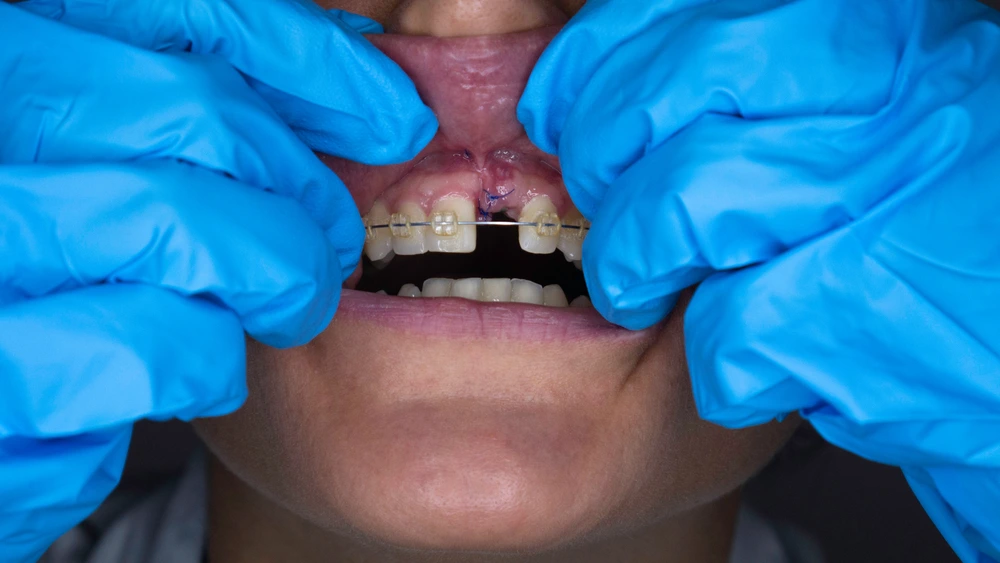
How Does the Non-Surgical Dental Implant Procedure Work?
Understanding the non-surgical dental implant process can help you feel confident and prepared, free from fear or uncertainty. This minimally invasive procedure eliminates the need for incisions, stitches, or lengthy recovery, using advanced technology to ensure safety, precision, and comfort.
Step-by-Step Overview
- 3D Imaging and Digital Planning: A high-resolution CBCT scan creates a detailed digital model of your jaw, allowing the dentist to map the implant’s exact position, depth, and angle with pinpoint accuracy.
- Custom Surgical Guide Creation: A tailored surgical guide is crafted to direct the implant’s placement through the gum, ensuring precision without the need for a scalpel or sutures.
- Local Anesthesia: The treatment area is numbed with local anesthesia, providing a pain-free experience, often without requiring sedation.
- Implant Insertion: Using the surgical guide, the implant is carefully inserted directly through the gum into the bone—a quick, controlled, and minimally invasive process.
- Healing Cap or Temporary Crown: A healing cap is placed over the implant, or, in some cases, a temporary crown is added immediately (as with immediate-load implants).
- Final Restoration: After a brief healing period (typically a few weeks), a permanent crown is attached, seamlessly completing your smile with minimal disruption.
At Prof Clinic, we leverage state-of-the-art guided implant technology to deliver fast, safe, and virtually pain-free results. Schedule your personalized consultation today to restore your smile with precision and care.
Read also: What do dental implants look like?
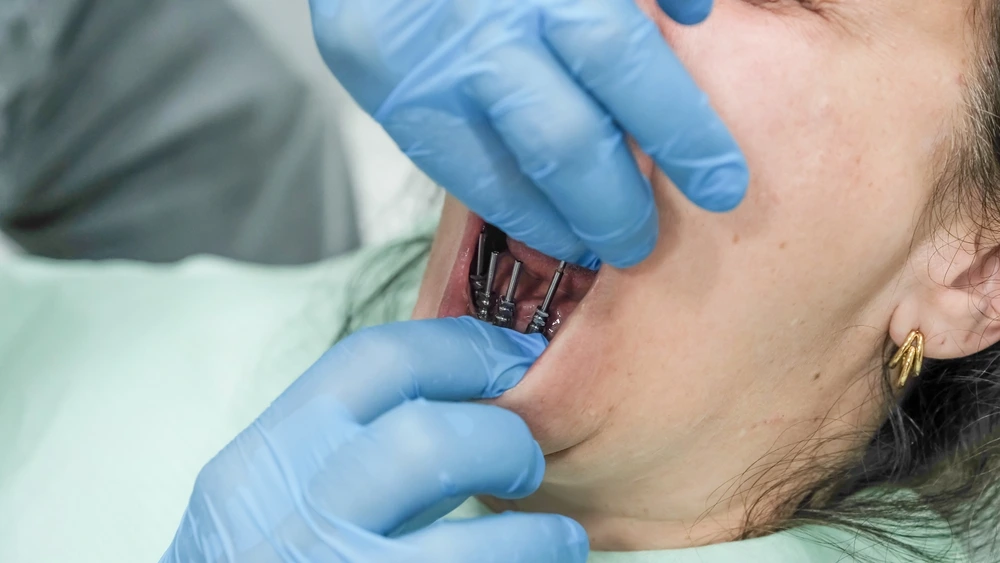
Advantages and Disadvantages of Dental Implants Without Surgery
For those seeking a modern solution to missing teeth, non-surgical dental implants offer a less invasive and more comfortable alternative to traditional methods. As with any medical procedure, understanding the benefits and limitations is key to making an informed decision. Below is a professional breakdown based on clinical expertise and proven outcomes.
Benefits of Non-Surgical Dental Implants
Non-surgical implants, often placed flaplessly using advanced guided technology, provide significant benefits for suitable candidates:
- Minimized Tissue Trauma: Without incisions or sutures, the procedure preserves surrounding gum and bone structure, reducing inflammation.
- Faster Healing and Recovery: Most patients experience minimal downtime, often resuming normal activities within 24 hours.
- Reduced Bleeding and Swelling: The absence of cutting leads to less post-operative discomfort and fewer complications.
- Enhanced Precision: Computer-guided technology ensures precise implant placement, even in complex or confined areas.
- Ideal for Anxious Patients: The gentler approach, typically requiring only local anesthesia, eliminates the need for sedation or general anesthesia.
- Lower Infection Risk: Since no tissue is opened, there’s a reduced pathway for bacteria, resulting in a cleaner procedure.
Book your consultation at Prof Clinic today and start your journey to the perfect smile.
Drawbacks of Non-Surgical Dental Implants
While non-surgical dental implants offer numerous advantages, they are not suitable for every patient and come with certain limitations:
- Not Suitable for Severe Bone Loss: Patients with significant bone volume or density deficiencies may require traditional bone grafting or surgical methods.
- Limited Visual Access During Placement: Since the gums remain intact, dentists rely solely on imaging and surgical guides, without direct visibility of the bone.
- Dependence on Digital Precision: The success of the procedure hinges on the accuracy of imaging and guide fabrication, necessitating advanced technology and meticulous planning.
- Not Ideal for Complex Cases: Full-arch restorations, angled placements, or patients with atypical anatomy may require conventional surgical techniques.
- Higher Initial Technology Costs: Advanced imaging and custom surgical guides can increase upfront costs, though these are often offset by faster recovery and fewer visits.
At Prof Clinic in Turkey, we conduct thorough evaluations using state-of-the-art imaging to determine the most effective and least invasive solution for your long-term dental health. Trust our specialists to deliver safe, evidence-based recommendations tailored to your unique needs.

How Much Do Non-Surgical Dental Implants Cost?
When considering the cost of non-surgical dental implants, it’s important to understand that pricing can vary significantly due to a range of clinical and technical factors. Although these procedures are less invasive, they still involve advanced diagnostics, meticulous planning, and high-quality materials—all of which influence the overall investment.
While actual costs depend on your unique case, the following key elements typically shape the price:
- Type and Number of Implants: Single mini implants tend to be more cost-effective than full-arch restorations or complex placements involving multiple units.
- Technology and Treatment Planning: Tools like 3D imaging, surgical guides, and computer-assisted placement enhance precision—and add to the cost—but they help minimize complications and reduce time spent in the chair.
- Material Quality: Premium materials, such as high-grade titanium and custom-designed crowns, contribute to both durability and aesthetics but can increase the total fee.
- Provider Expertise and Location: Clinics equipped with cutting-edge technology and highly experienced specialists may charge higher fees, but they often deliver safer procedures and longer-lasting results.
- Additional Procedures: Even non-surgical treatments may involve bone scans, temporary crowns, or soft tissue adjustments, which can modestly increase the final cost.
On average, non-surgical dental implants range from $1,500 to $3,000 per implant, but a comprehensive personal assessment is the only way to receive an accurate estimate tailored to your specific oral health needs and goals.
At Prof Clinic, we’re committed to transparency and personalized care. Our expert team provides in-depth evaluations and flexible payment options—ensuring you receive exceptional, minimally invasive implant treatment without compromise.
Book your consultation today and take the first step toward a confident, lasting smile.
Prof Clinic: The Best Dental Implant Clinic in Turkey
As one of Turkey’s premier implant clinics, Prof Clinic specializes in minimally invasive solutions—including non-surgical dental implants—that restore both function and aesthetics without the stress of traditional procedures.
Why Patients Choose Prof Clinic
- Expert Implantologists with international credentials and decades of hands-on experience
- State-of-the-art technology, including 3D imaging and computer-guided placement
- Minimally invasive techniques that promote faster healing and greater comfort
- Multilingual patient coordinators dedicated to supporting international visitors
- Transparent pricing with no hidden costs
- Customized treatment plans tailored to your unique anatomy and personal goals
From your initial consultation to your final smile, Prof Clinic is committed to clinical excellence, patient safety, and a personalized approach that sets us apart. That’s why thousands of patients from around the world trust us with their dental implants in Turkey.
Ready to restore your smile and confidence? Contact us now on WhatsApp for a free consultation, quick answers, and a personalized treatment plan.
FAQs About Non-Surgical Dental Implants
When Are Dental Implants Not an Option?
Dental implants may not be recommended if you have uncontrolled diabetes, active periodontal disease, severe bone loss without the potential for grafting, or if you’re undergoing chemotherapy or have immune-suppressive conditions. Heavy smokers and individuals with poor oral hygiene also face a significantly higher risk of implant failure. A comprehensive medical and dental evaluation is essential before moving forward with any implant procedure.
Which Country Offers the Best Non-Surgical Dental Implants?
Turkey stands out as a top destination for non-surgical dental implant treatments—offering globally trained specialists, cutting-edge digital planning technologies, and substantially lower treatment costs without compromising on quality. Leading clinics such as Prof Clinic combine experience, precision, and exceptional care for international patients.
Are Non-Surgical Dental Implant Results Guaranteed?
No dental implant procedure—surgical or non-surgical—can be guaranteed with 100% certainty. Outcomes depend on variables like bone quality, oral hygiene, and overall health. However, with expert planning, guided placement, and adherence to aftercare, success rates can exceed 95%. To protect your results, always follow post-treatment instructions and attend regular dental check-ups.
Are Non-Surgical Teeth Implants Safe and Effective?
Yes—when properly diagnosed and performed by experienced professionals, non-surgical teeth implants are both safe and highly effective. Utilizing advanced 3D imaging and flapless techniques, implants are placed through the gum without incisions, reducing trauma while maintaining precision. With adequate bone density, healthy gums, and professional aftercare, outcomes are comparable to traditional implants, often achieving success rates above 95%.
What’s the Difference between Non-Surgical Tooth Replacement and Traditional Implants?
Non-surgical tooth replacement methods avoid cutting or stitching the gum. These may include mini implants, computer-guided placement, or removable options like snap-on dentures. In contrast, traditional implants typically require surgical incisions and sutures. Non-surgical techniques focus on reduced discomfort, faster recovery, and fewer appointments—but they are best suited for patients with sufficient bone support and healthy soft tissues.

